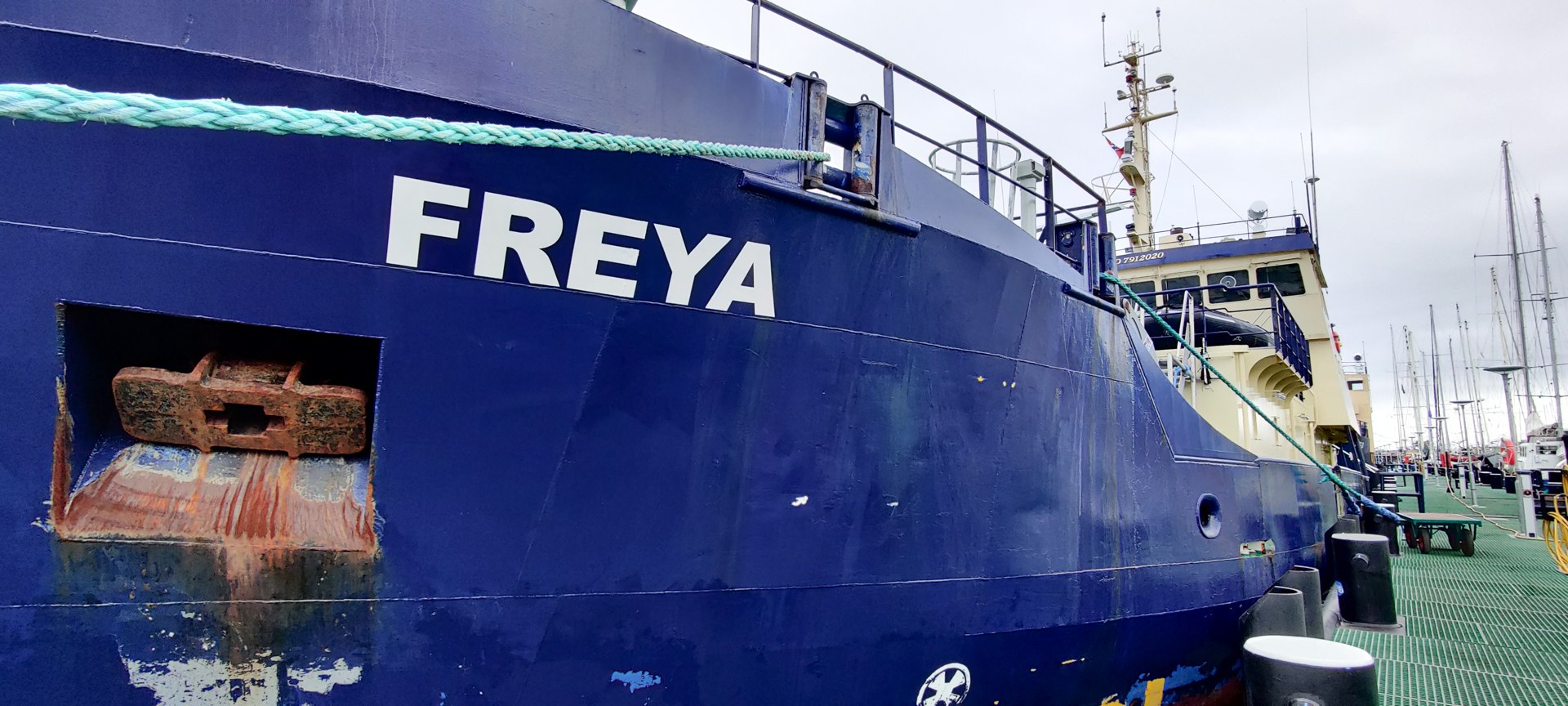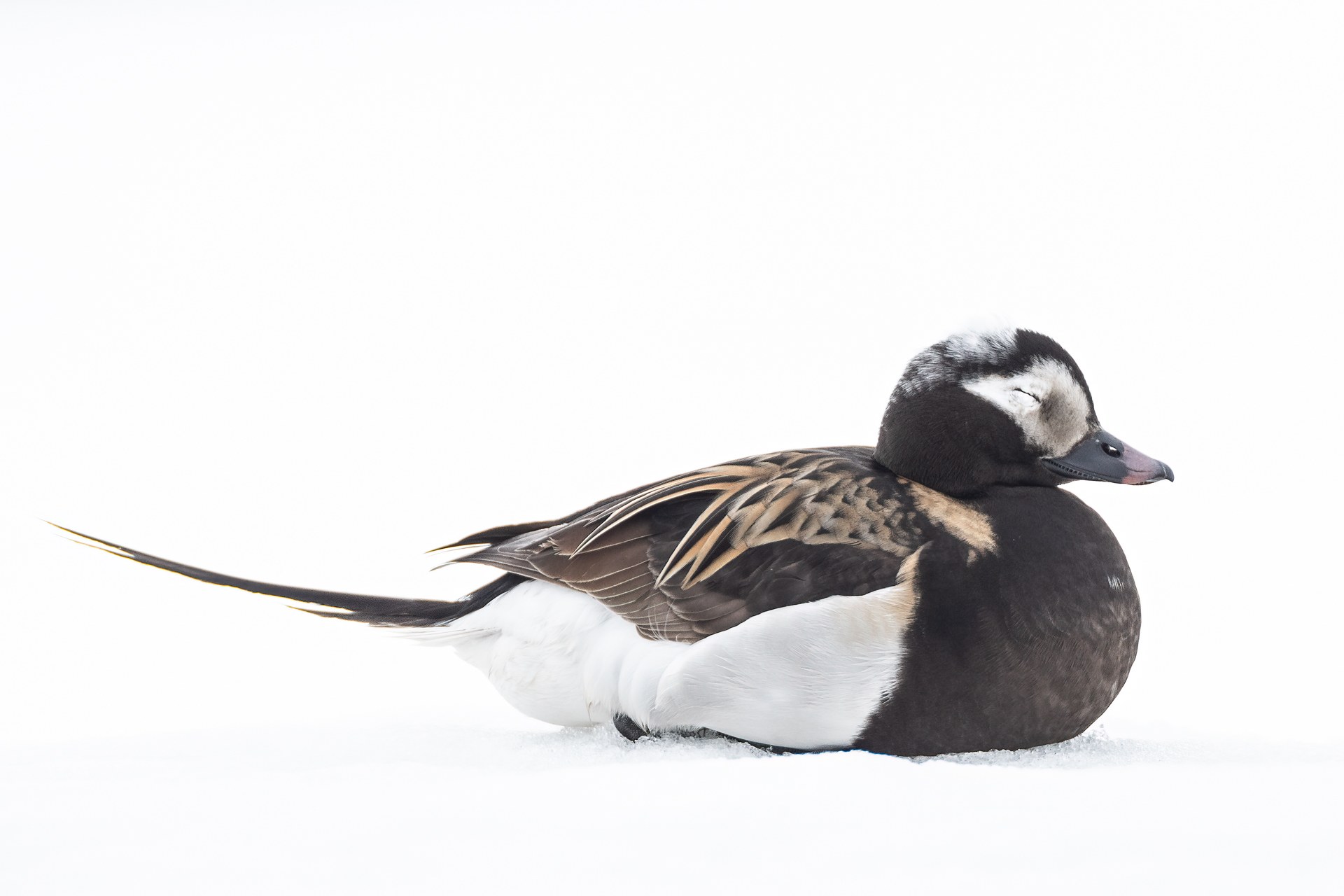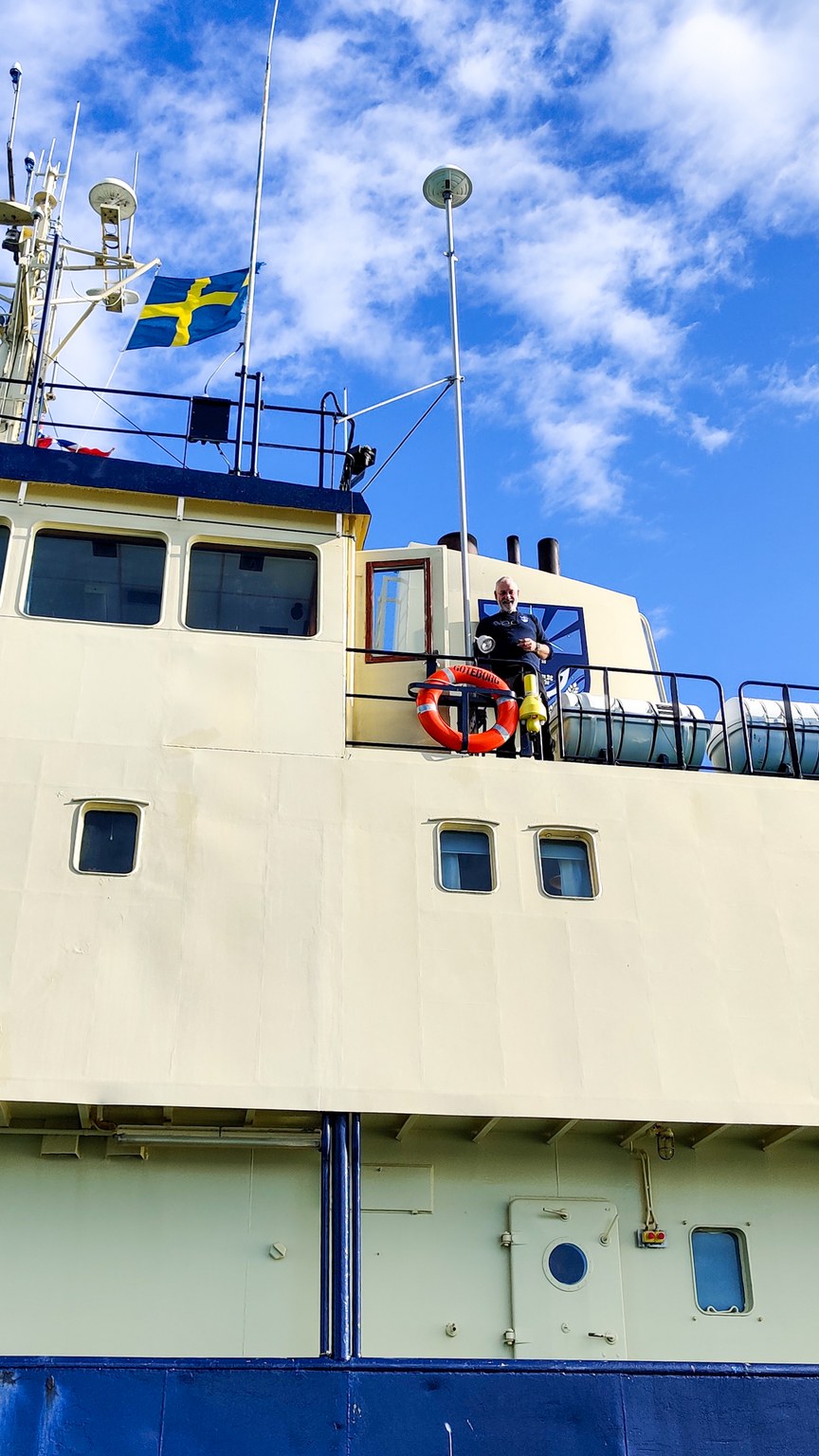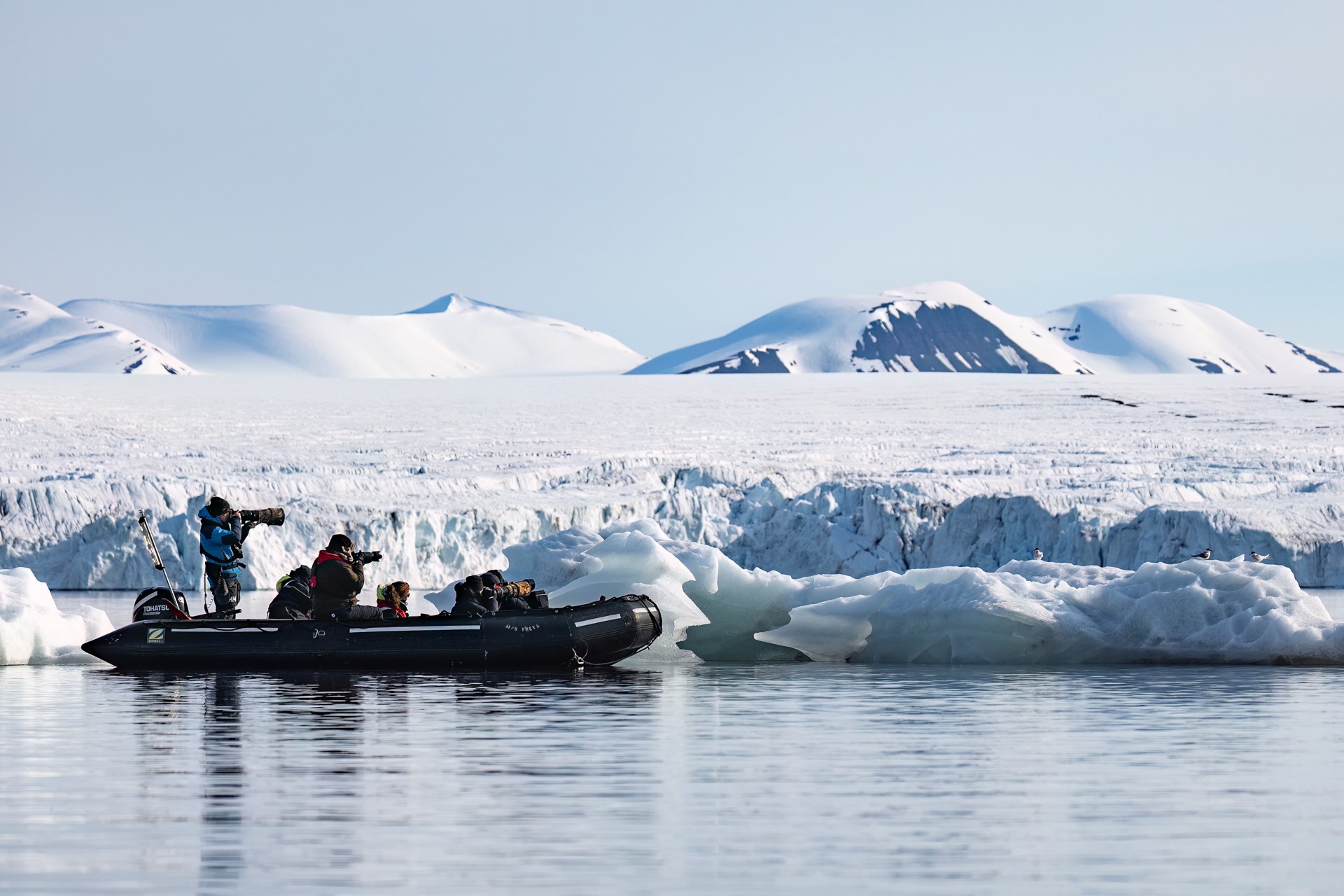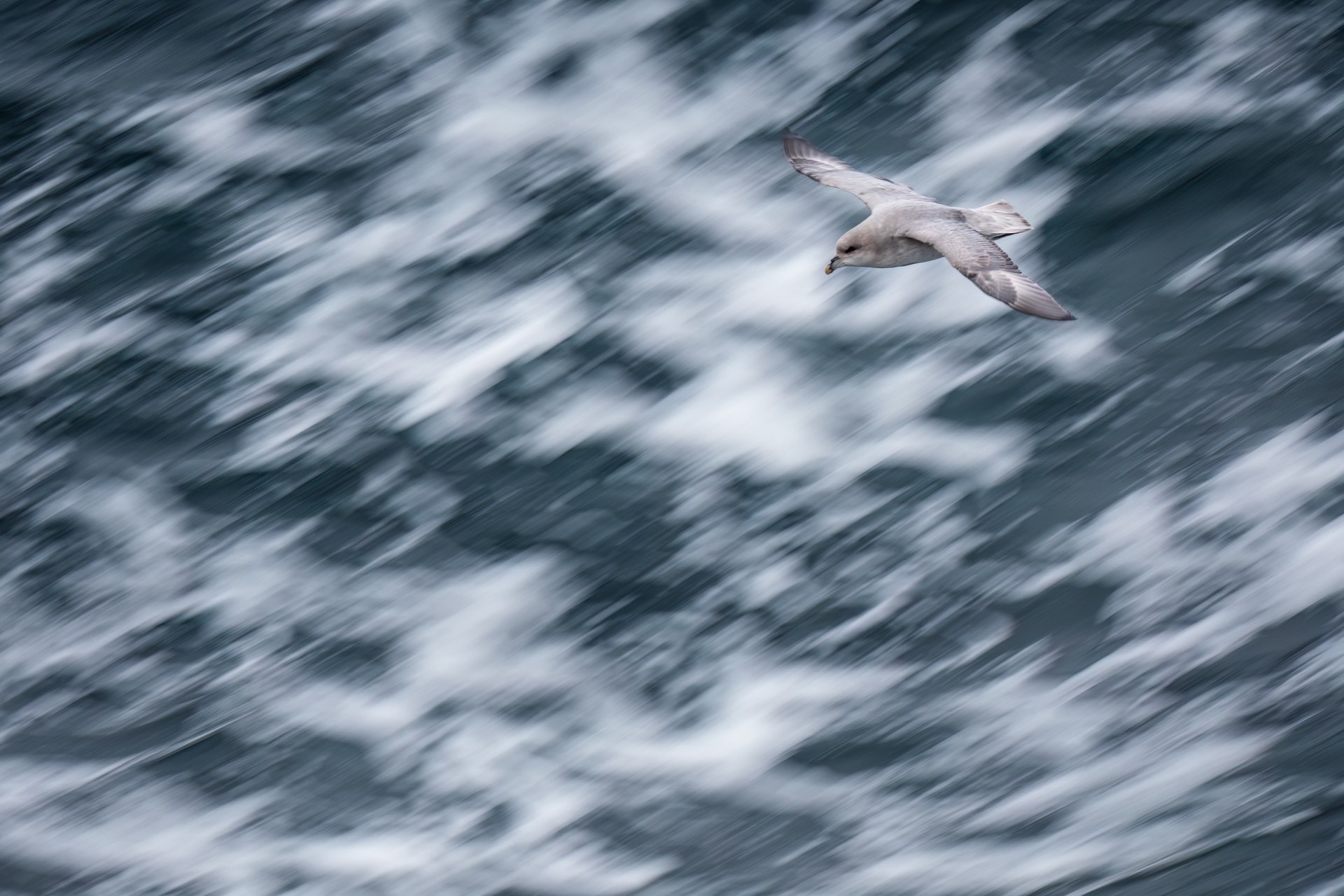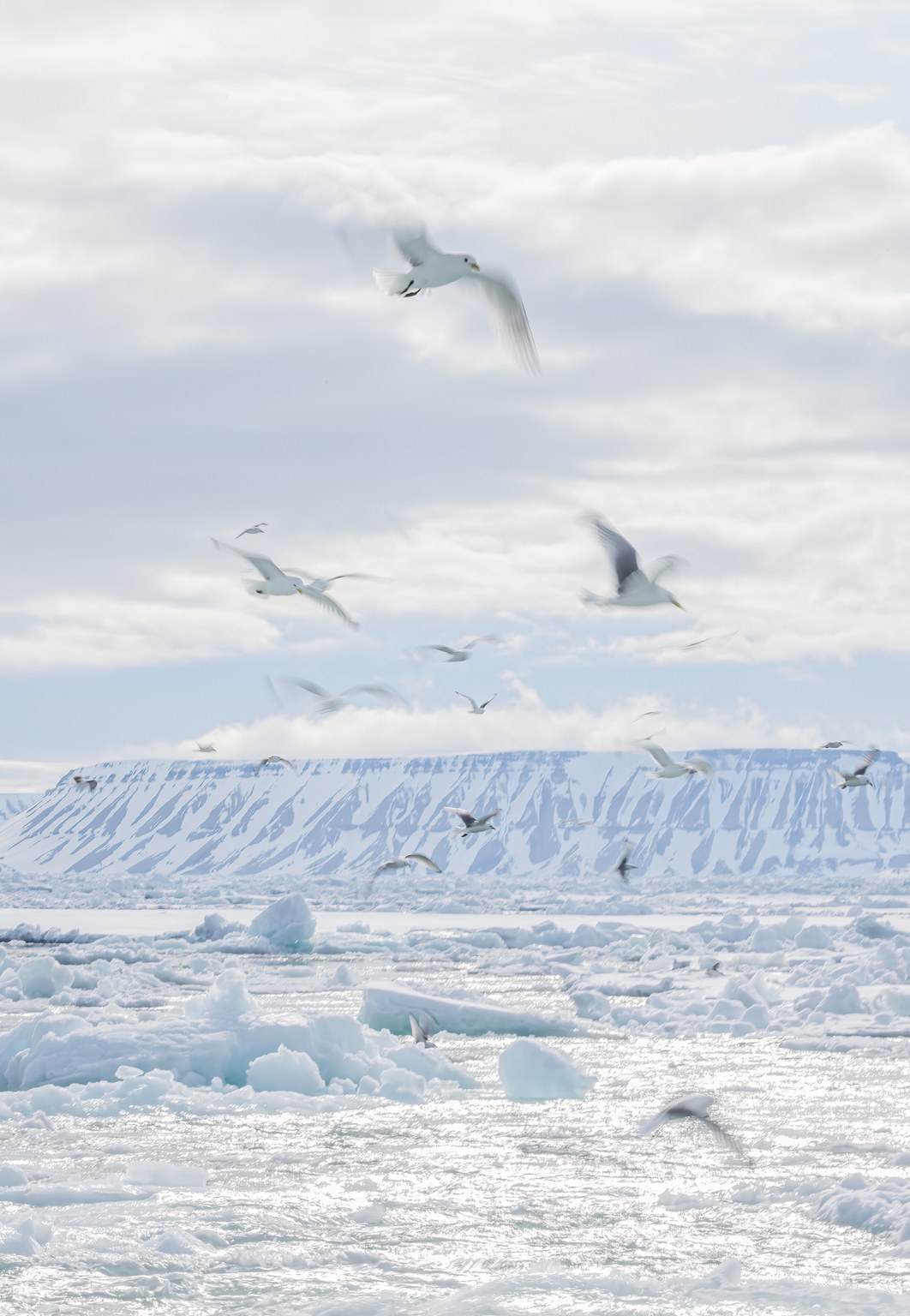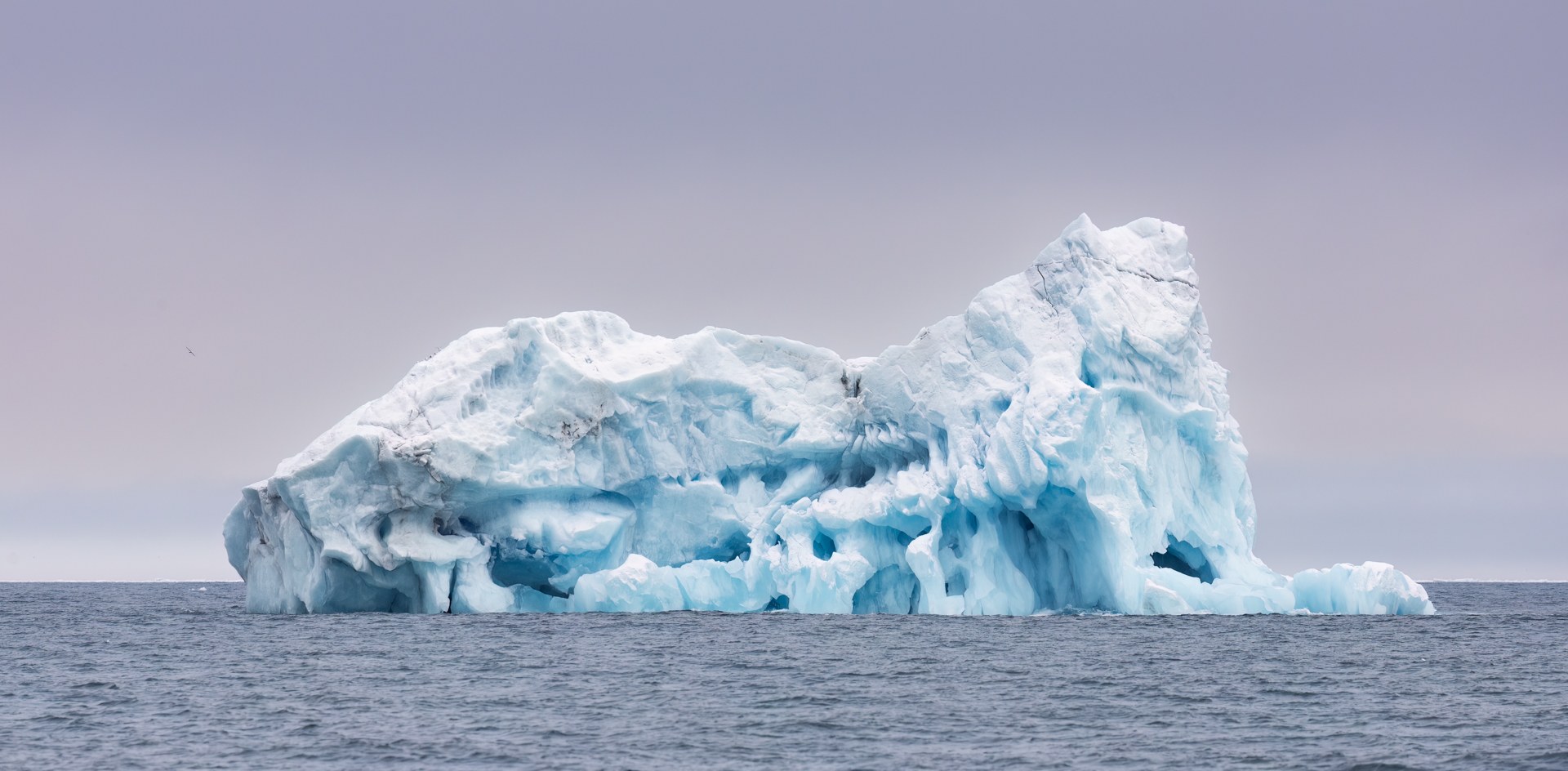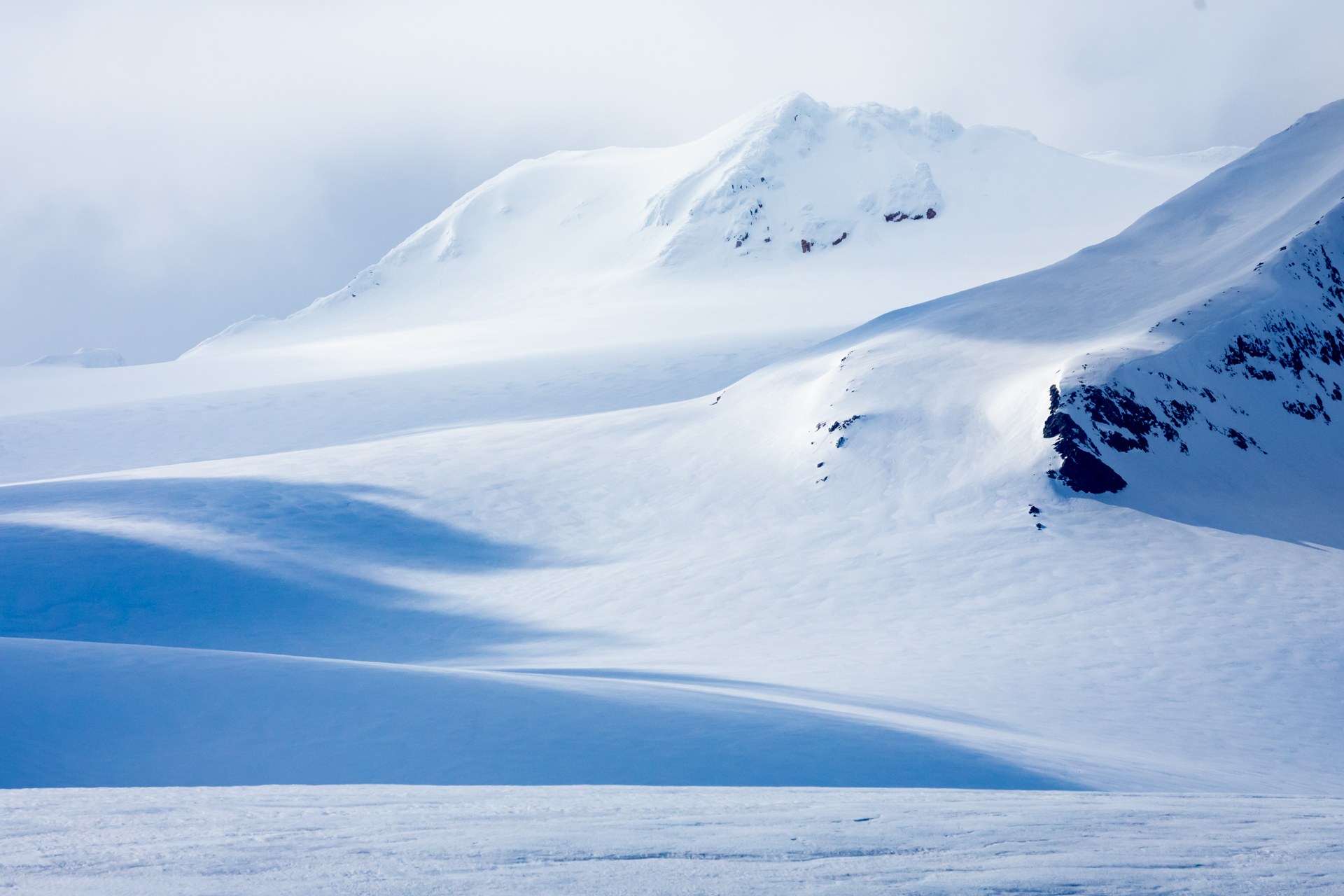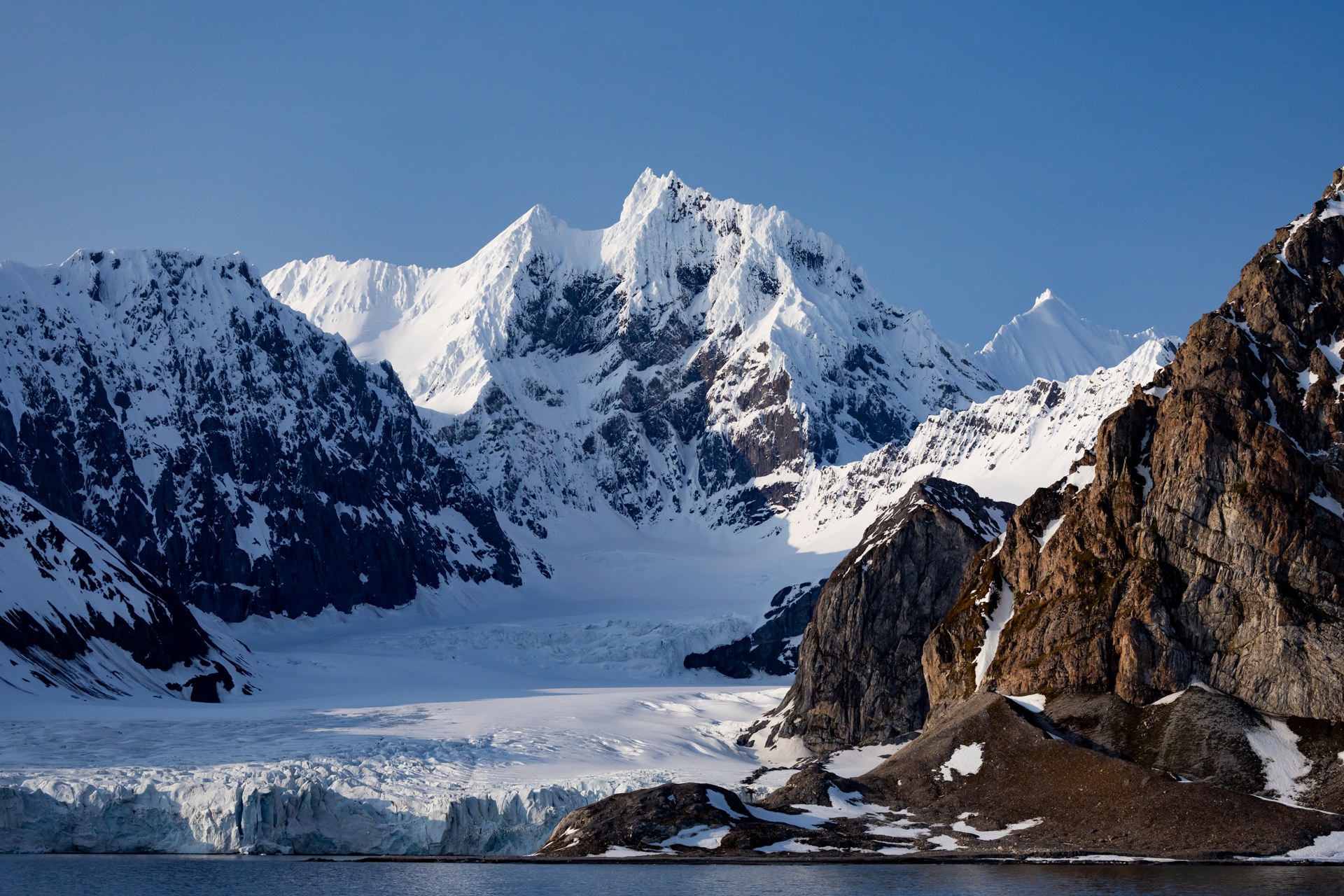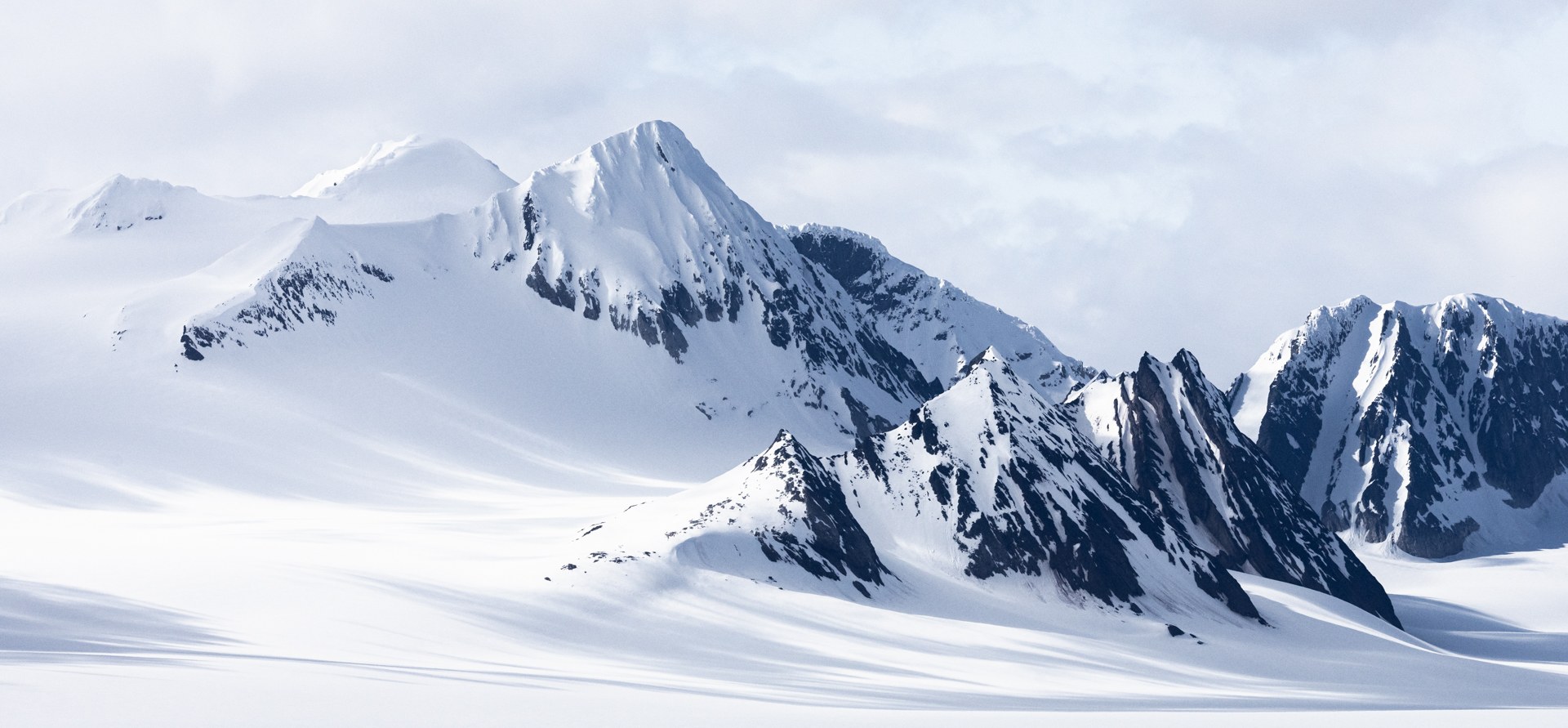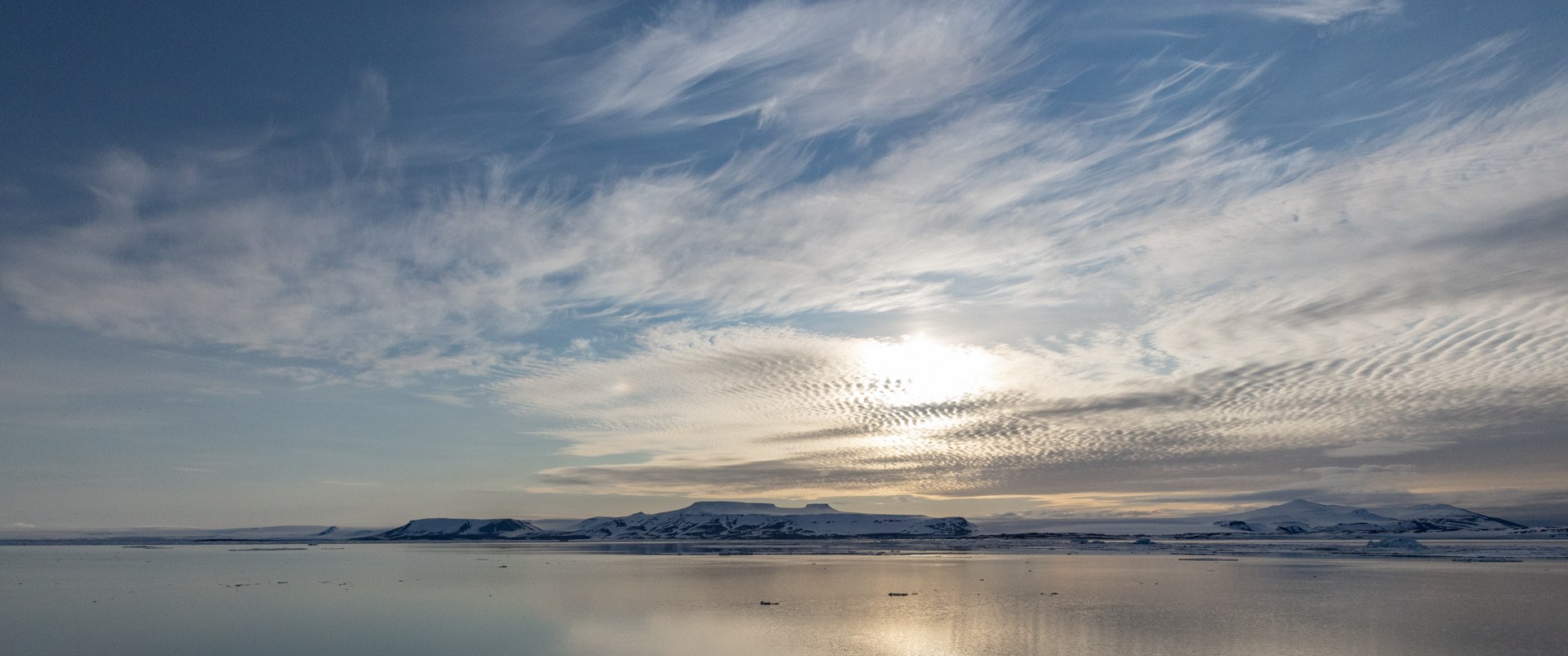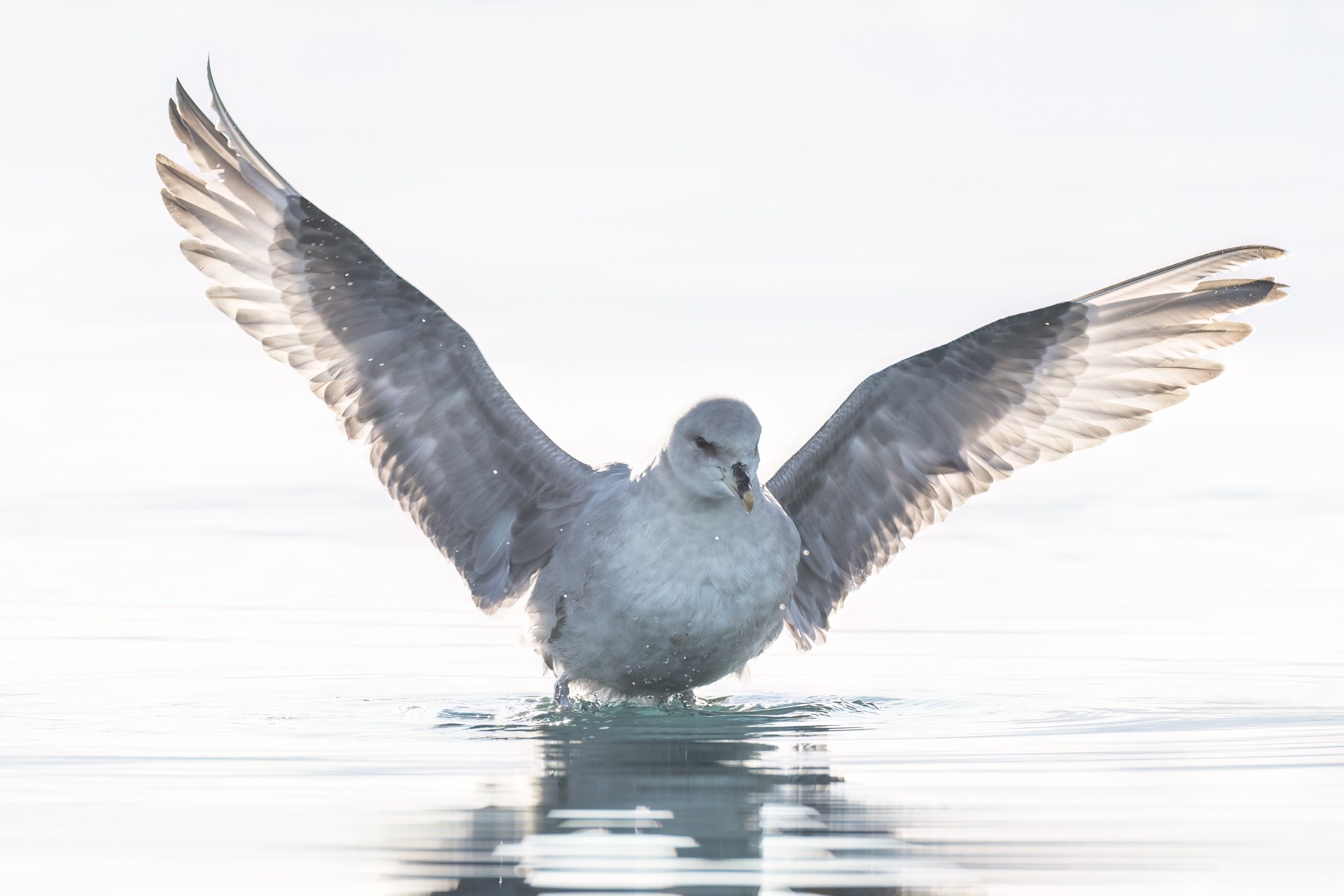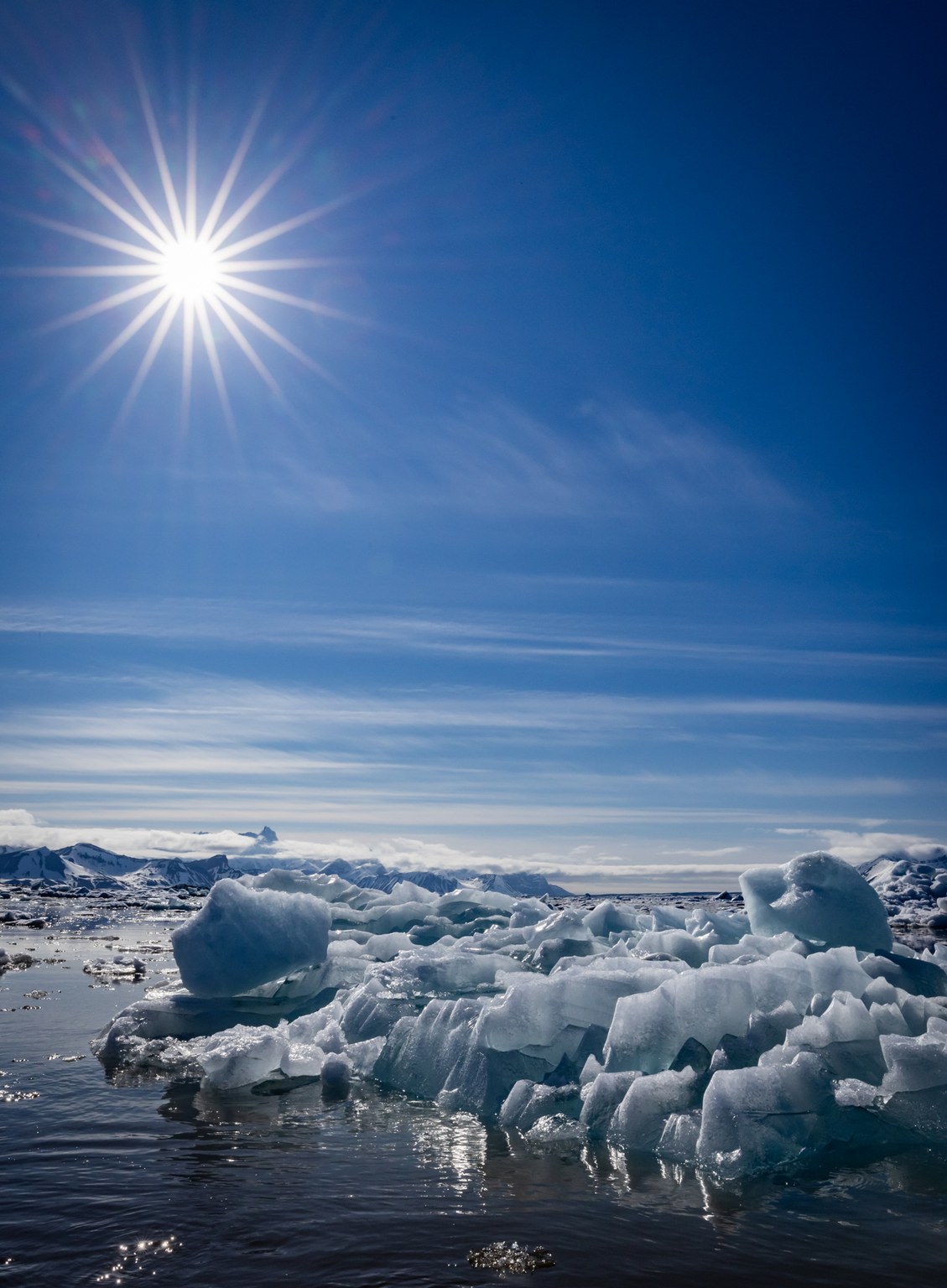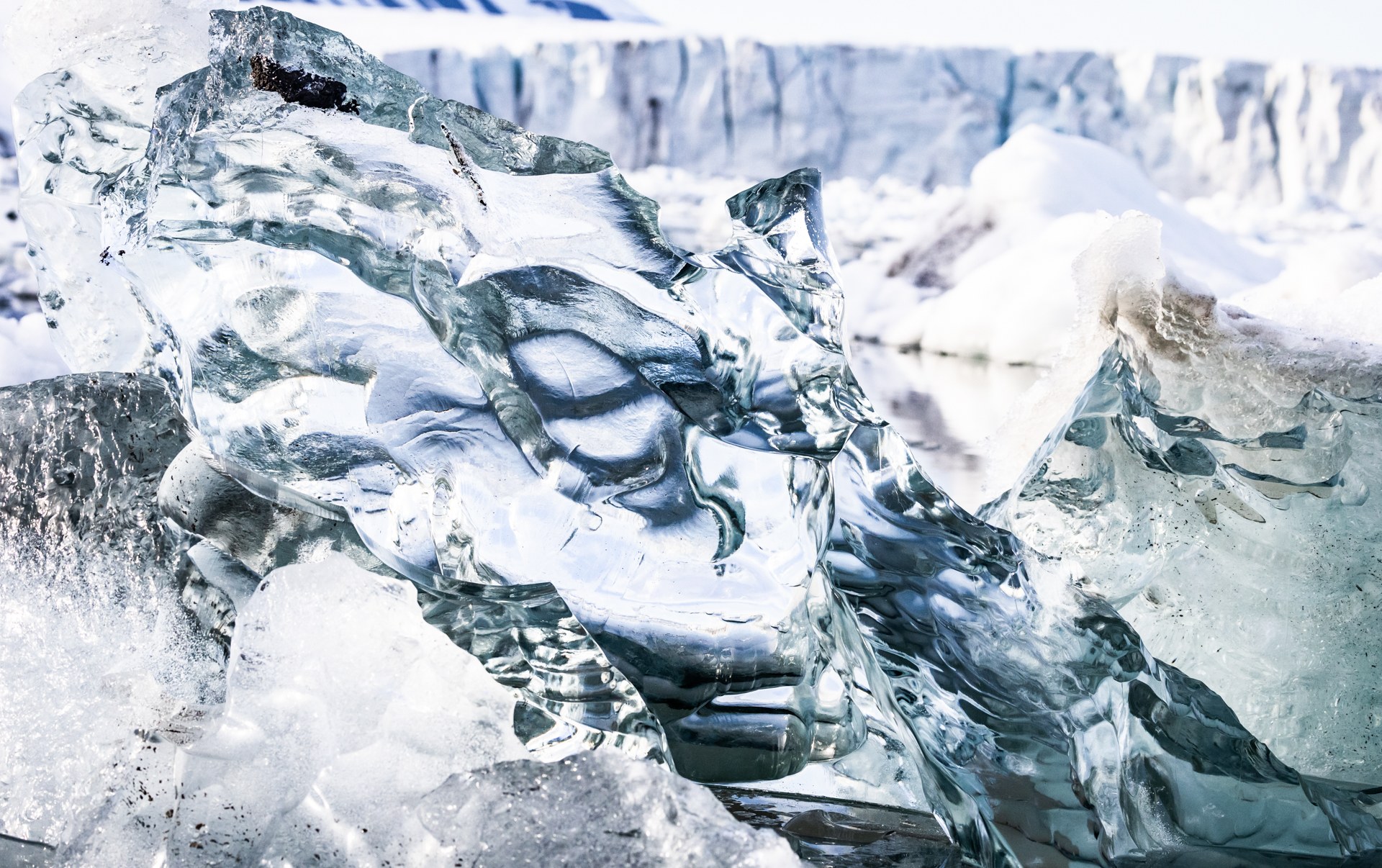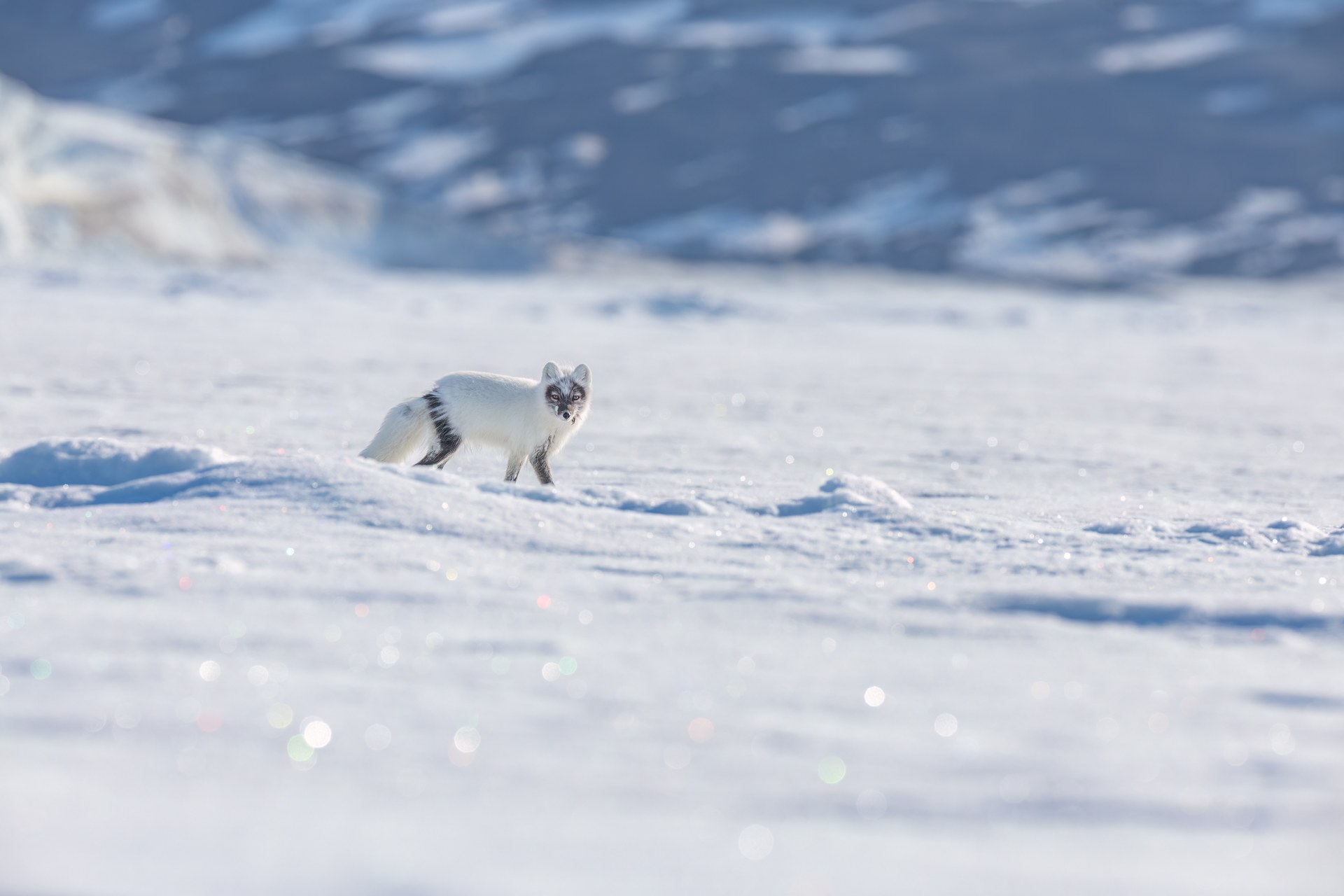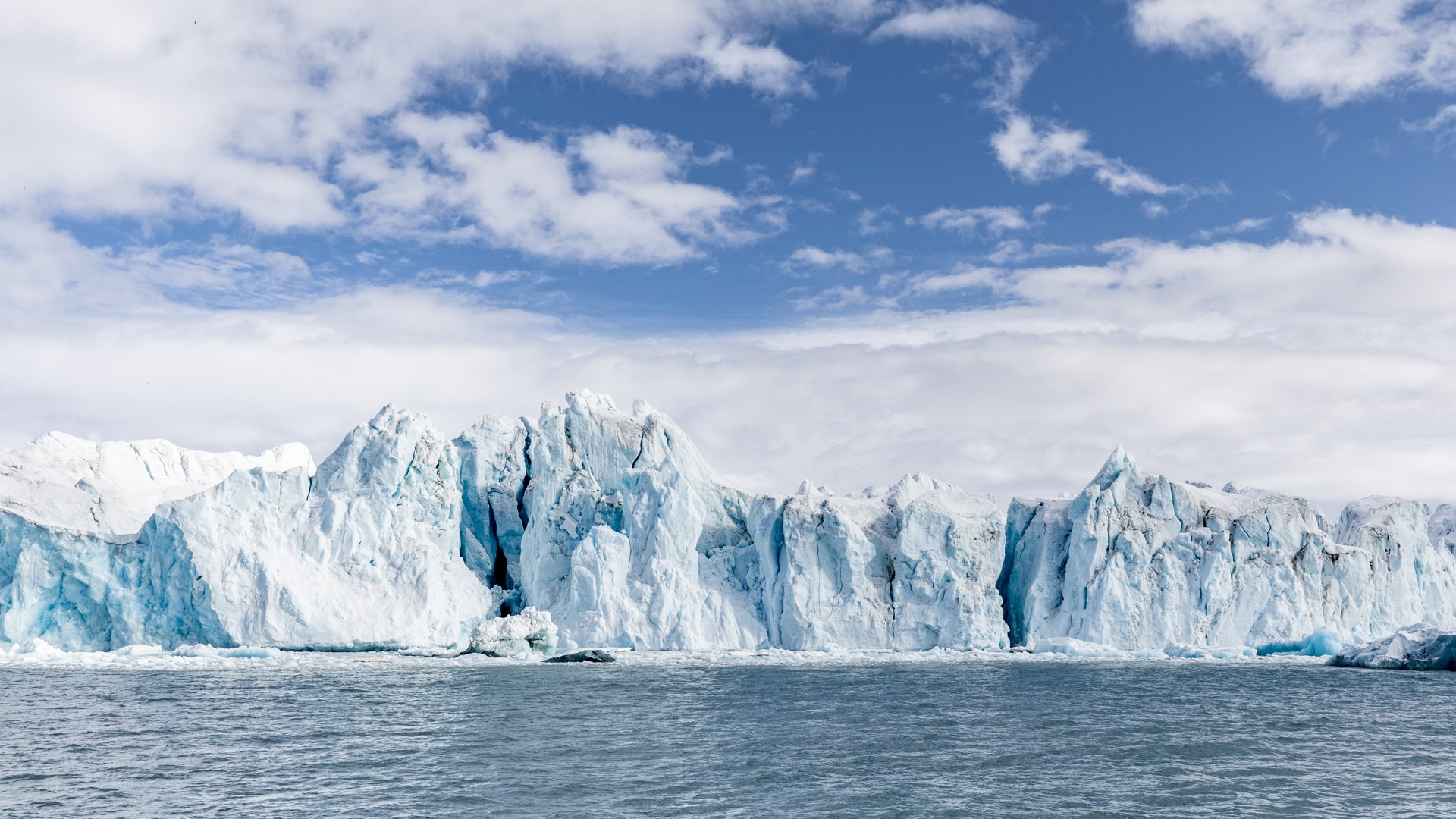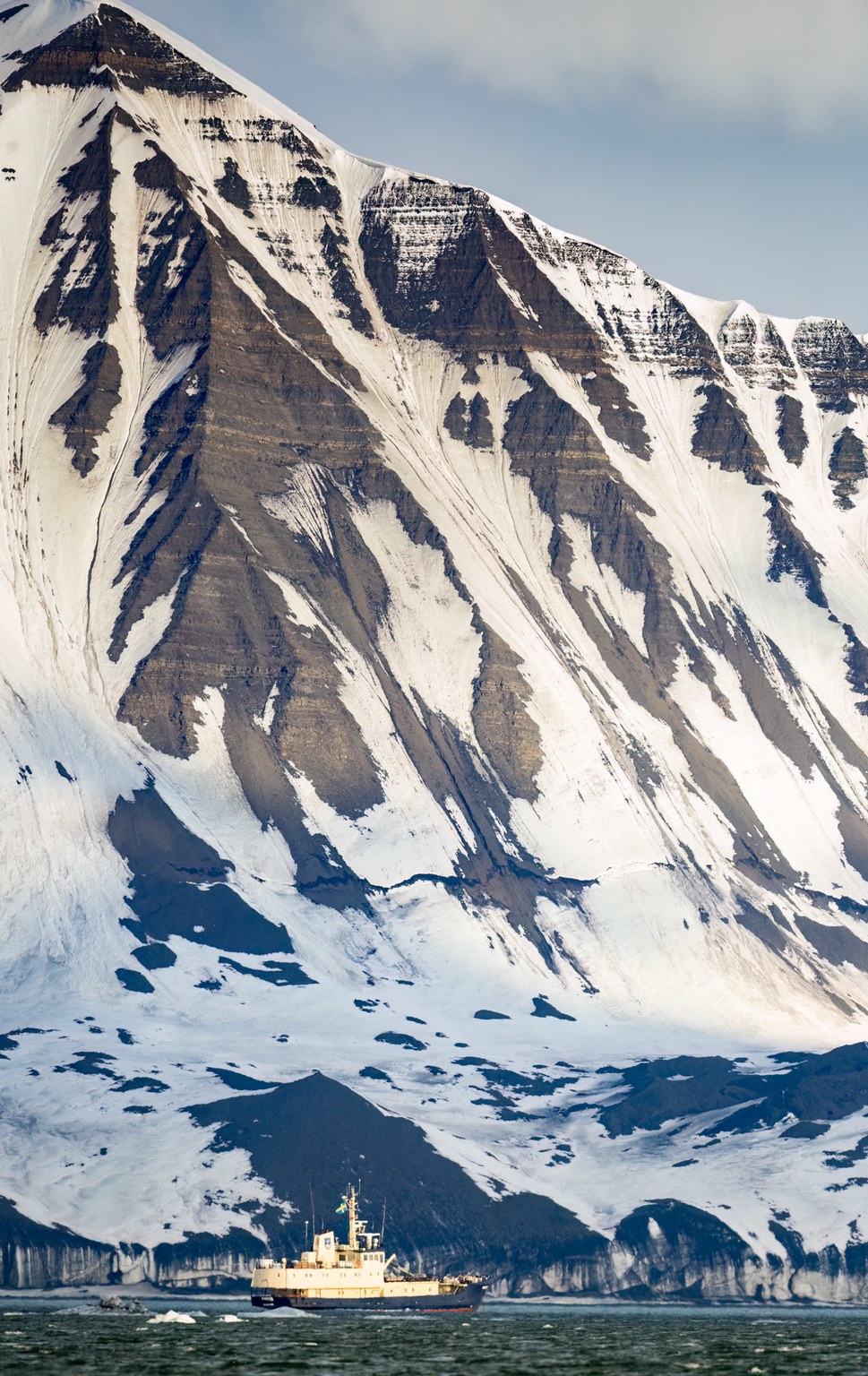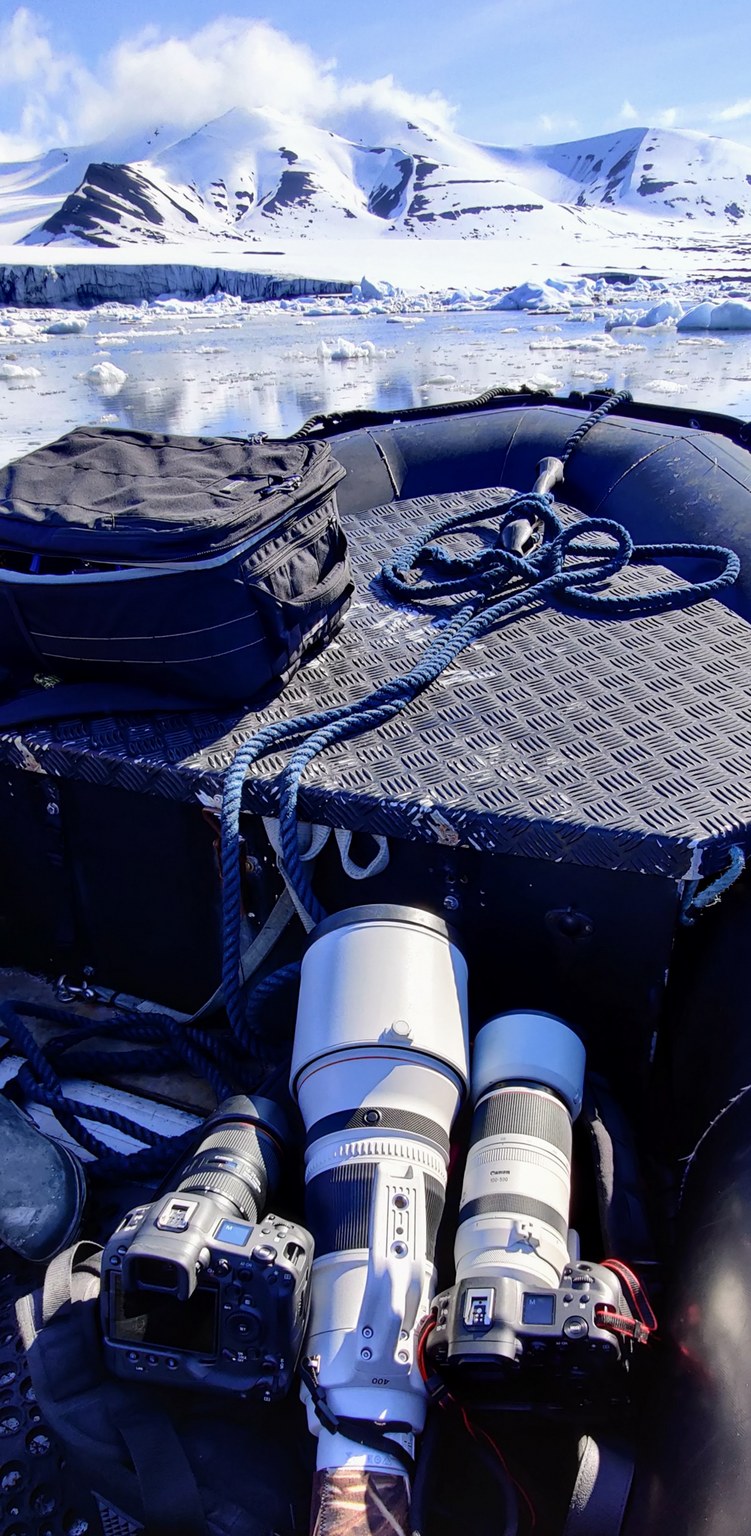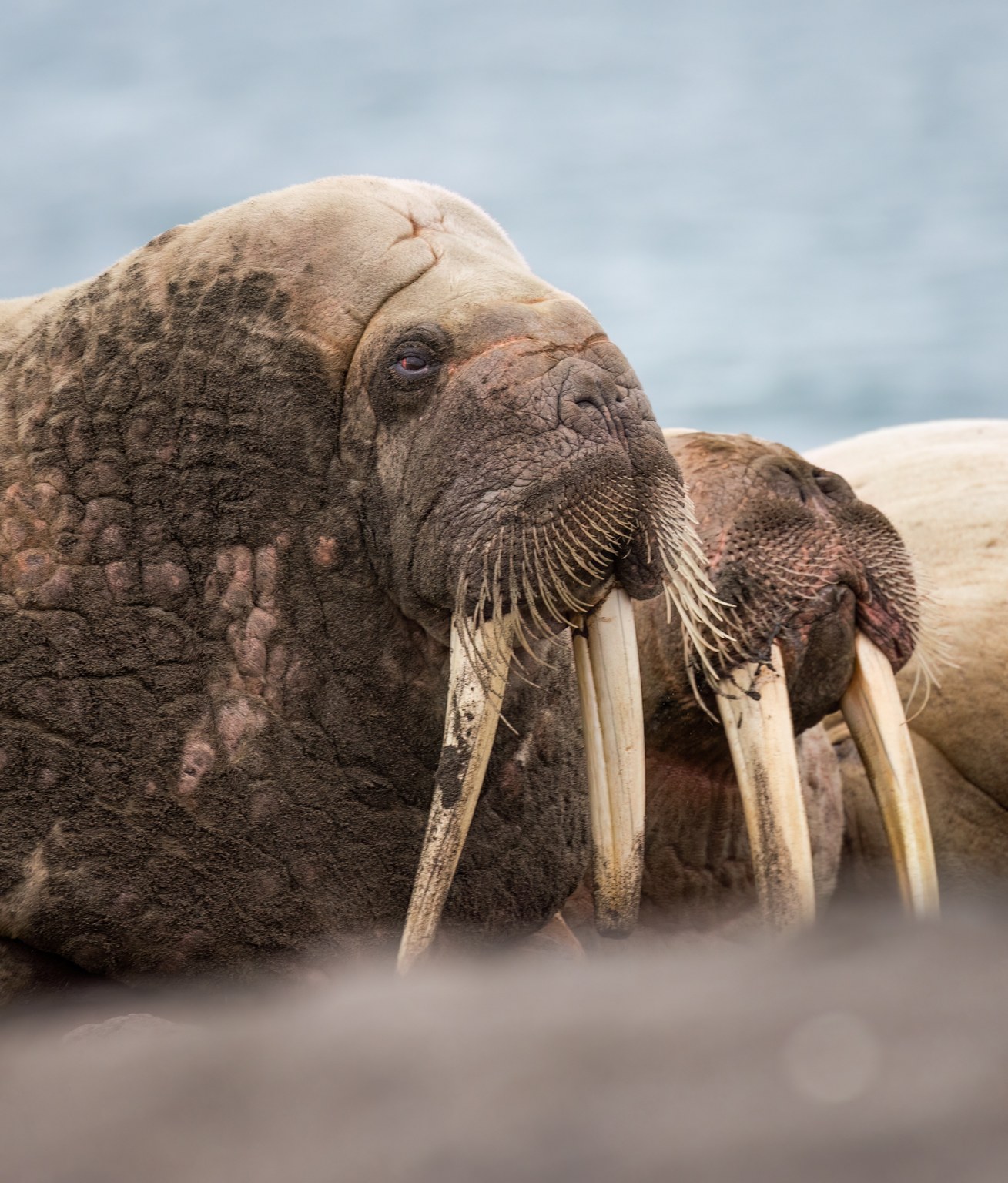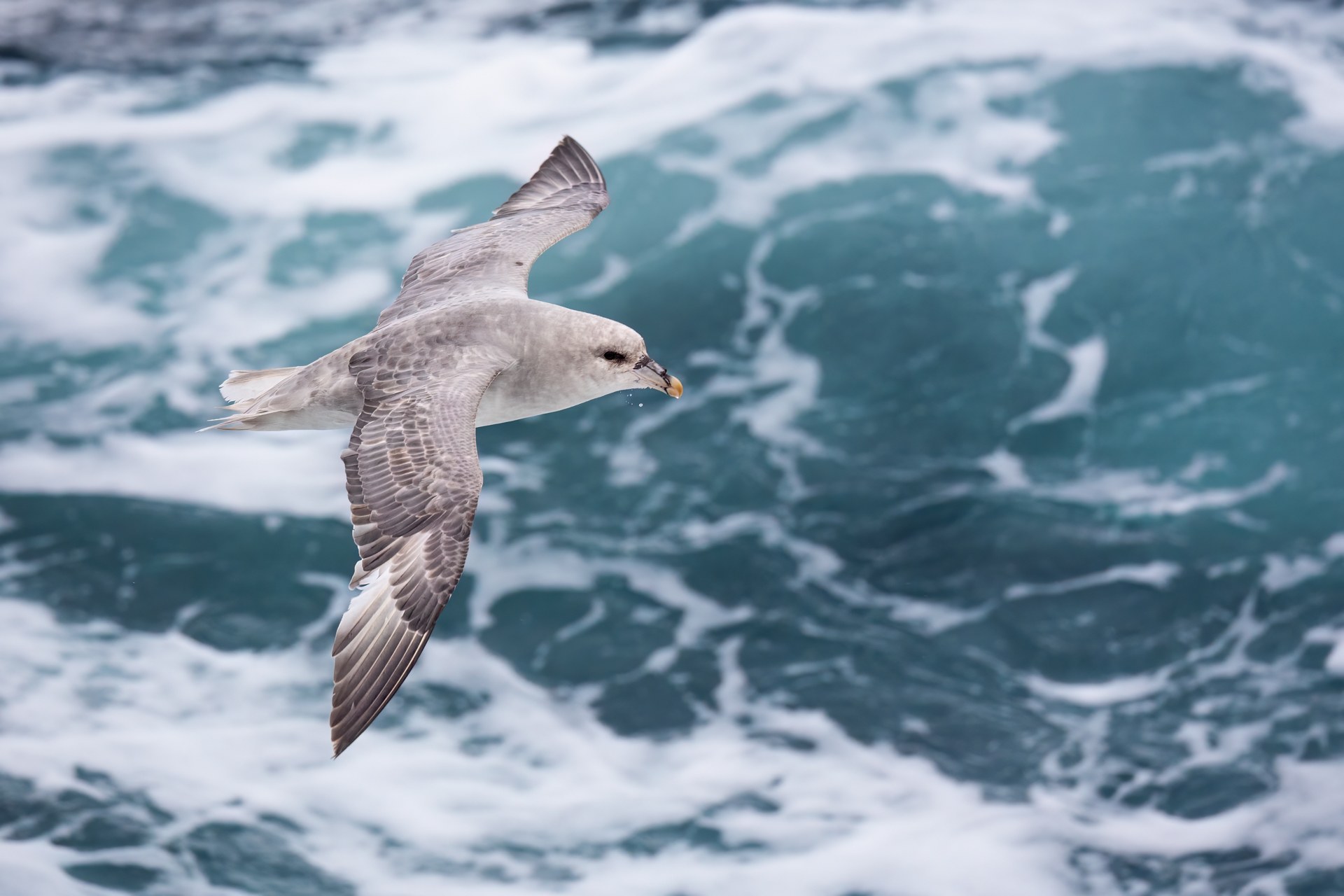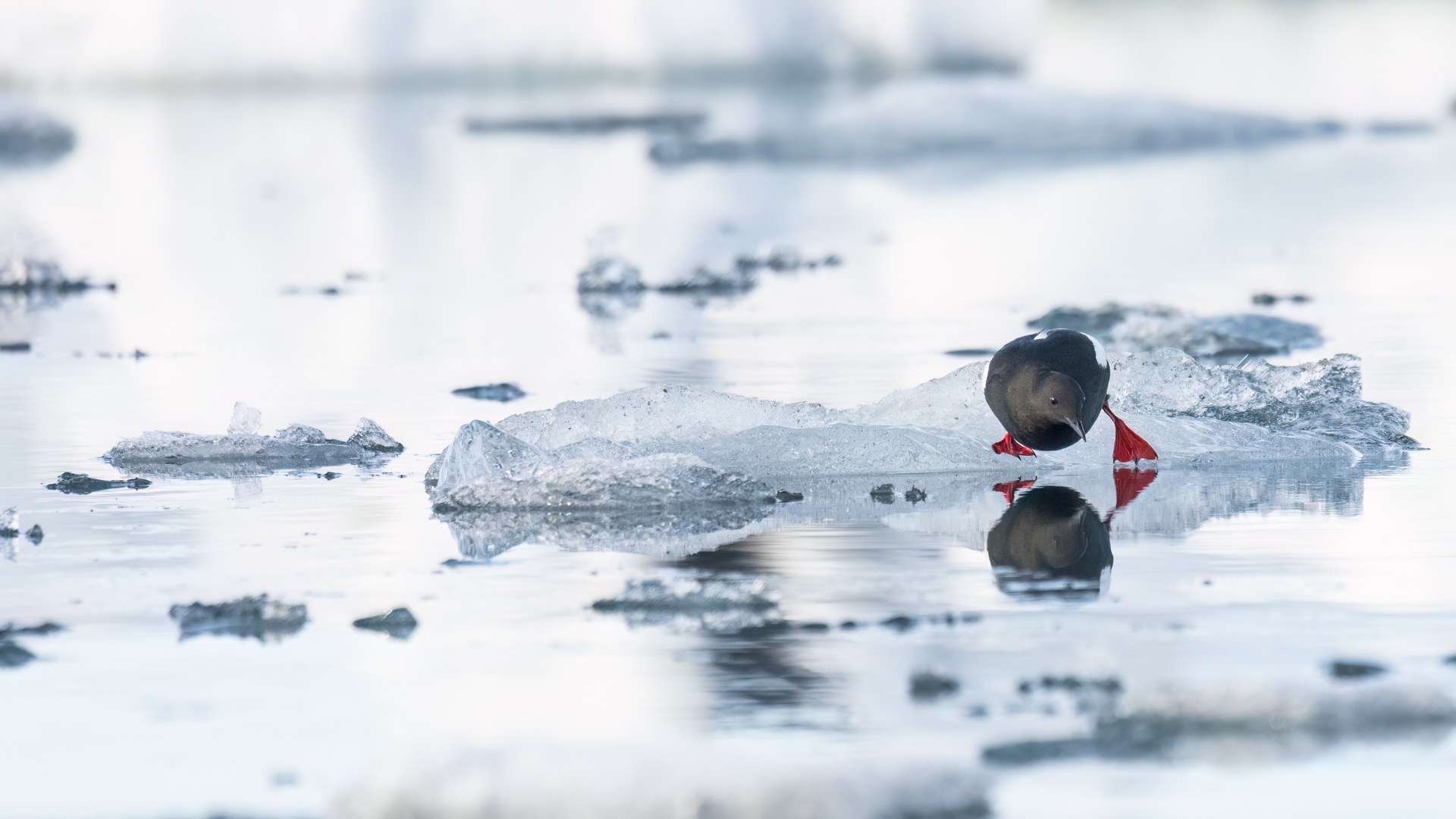This is the kind of trip you experience once in a lifetime … That’s what Mia Surakka thought when she decided to join a friend to Svalbard last June with Vega Expeditions. The pictures she had seen focussed on landscapes and mammals, so as a bird photographer, she wondered if she would have enough subjects. Mia challenged herself to capture Svalbard’s nature in a versatile way, and seeing the results, we think her mission was accomplished! In this blog, she shares her story.
After a couple of days in Longyearbyen, the moment finally came to embark. Our icebreaker ship stood at the pier, surrounded by clouds and mountains. The adventure was about to begin, and I felt it in the pit of my stomach.
The light yellow and blue ship read FREYA in big, white letters. I stood alone on the deck for a while, thinking this would be my home for the next 8 days. The captain and our guides were planning our route based on the ice and weather forecast.
Our leading guide, Yves, showed me my cabin inside the ship. There was plenty of room for my luggage, and I was asked not to leave anything on the tables, because the boat occasionally rocked. I had no clue about the stormy seas ahead as we would travel towards the southern tip of the island.
Rough seas
Soon after dinner, southwest winds affected our route. The ship rocked so hard that I held on to the walls. I woke at 6 am and went to the bridge to assess the situation. Our captain Bengt, seaman Kathrine, and guide Yves showed me on the map that we would soon reach the island’s southern tip.
By noon, the winds died, and I went on deck. Northern fulmars flew around the ship, and I photographed them from the rocking vessel. The dark sea and white foam heads created a beautiful contrasting pattern with the birds. When the sea was calm, we prepared our first landing.
Zodiac ride
During the safety briefing, we learned how to embark on the Zodiac, go ashore, and keep our equipment dry, and we were briefed about the possible threats imposed by polar bears. The zodiacs would allow us to shoot from a lower angle, approach the edges of the glaciers, and search freely for inspiring locations, so we were excited.
We landed after our guides had verified there were no polar bears on the island. In Svalbard, bears can attack humans, so both guides carried rifles for emergencies, but using them is a last resort. We photographed walruses, enormous mammals that remain in the sea to eat shellfish for days and then come ashore to digest. They have a funny way of resting their heads on their teeth, making them look very lazy. It resulted in some great shots!
Different shades of turquoise
We kept our camera and clothing ready day and night. I fell sound asleep after dinner, but Yves woke us after 3 hours. “There’s a beautiful iceberg outside,” he said. I was out in minutes, shooting the massive berg shimmering in different shades of turquoise. After an hour, many went back to sleep, but I stayed on deck to photograph my faithful fulmars, which followed our ship the whole way.
I chatted with Roberta, a photographer from Naples. She works in the hectic fashion industry in Milan and, as a counterweight, travels to the Arctic. This was her third Svalbard trip. Maybe this was more than just once in a lifetime …
Surprising wildlife
The days on the ship were spent scouting and shooting. I took a nap whenever I could put my camera down. There were many different sea birds, a walrus or two lounging on the ice floes, sometimes an ivory gull.
One calm night, Yves knocked on the door at 3 am: “Polar bear spotted. We’ll leave right away.” After 15 minutes, we were in the Zodiacs. Two polar bears were resting on the glacier. They were barely visible with binoculars, so we waited for them to move while we photographed birds and landscapes. Then, one of the bears got up and started walking towards us. It sniffed the air and calmly lay down on the ice’s edge, where we could photograph it up close. After 10 minutes, the bear got up and walked away. It was a magic
moment, and we also spotted an arctic fox. We were grinning happily as we sailed back to Freya for breakfast, prepared by our five-star chef Michelle.
The next day, we left by Zodiac at four in the morning to photograph near the glacier’s edge. One ivory gull was posing for us on an ice floe. We saw a large flock of kittiwakes through our binoculars and noticed a Sabine’s gull, of which only about ten pairs nest in the Svalbard region. Seeing our lenses swing in the rubber boat as we tried to get this tiny gull into our focus, was quite entertaining. The bird flew above us a few times, and the fastest photographers captured the moment.
Majestic journey
The expedition was ending, and everyone’s sleeping rhythm was out of whack. Depending on the opportunity, I slept about 1.5 to 5 hours daily. We mostly had calm waters and blue skies, so the best light had been at night.
The result is much richer than I had imagined: majestic landscapes, fantastic underwater colors of the ice floes, beautiful graphic patterns of glaciers, a variety of arctic birds,
extraordinary mammals, and, of course, behind-the-scene action of my travel companions, reminding me how much fun we had. It was a unique experience I will never forget, and given the chance, I will certainly return!
